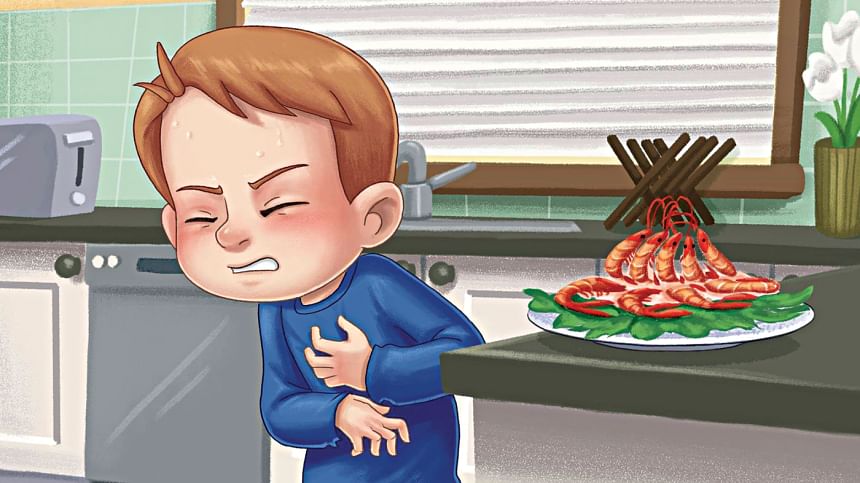Food intolerance and food allergies

Food intolerance and food allergy sometimes create confusion among people. Many of us don't know what are the differences, causes and management issues of these two.
Food intolerance is a problem in the digestive system. When our bodies fail to digest any specific food, we feel discomfort in our digestive system. This is food intolerance. The symptoms of food intolerance are nausea, vomiting, stomach pain, etc. Food allergy is a problem in the immune system.
When our bodies by mistake think a food is harmful for us and creates antibody against it to protect the body that is food allergy. The symptoms of allergies are rashes, itchiness, breathing problem, changes in heart rate and blood pressure.
Food intolerance is more common than food allergy. Food intolerances are not that damaging; however, food allergies can be life threatening.
Because of food intolerance, different types of carbohydrate and protein rich foods are difficult to digest. These may include:
Lactose intolerance is the most common food intolerance. To digest dairy products (lactose) the lactase hormone is required. Some people do not produce enough lactase hormone and others cannot produce that at all because of genetic problems.
Some children even cannot digest mother's milk. Yogurt and cheese are tolerable foods in some cases. Alternative foods are dairy free products like soy, almond and coconut milk.
Fructose intolerance is another type of intolerance. Fructose is a carbohydrate called monosaccharide and can be found in fruits, vegetables and different sweet products. This intolerance happens when our bodies cannot break down fructose properly. People who have this problem need to avoid or reduce the intake of beverage drinks such as soda, fruit juice, apple, grape, and limit consumption of watermelon, peas, and Zucchini. They also should check food ingredients carefully to find out any hidden forms of fructose.
FODMAPs is a group of fermentable carbohydrates. It contains fermentable Oligo, Di, Mono-saccharide and Polyols, that means it has fructose, lactose, fructans and galactose. Examples are milk, cheese, honey, apple, artichokes, bread, beans, and lentils. In the FODMAPs problem people cannot digest the carbs. Low-FODMAP diets can be helpful in this situation. Meats, fish, eggs, nuts (except pistachios), lactose free dairy products, fruits like bananas, berries, lemons, melons (except watermelon), vegetables like carrots, eggplant, spinach, tomatoes, bell peppers, grains like corn, oats, rice are some examples of low-FODMAP foods.
Gluten is a protein found in wheat, barley, rye, etc. Gluten intolerance, wheat intolerance or Celiac diseases are not the same. Celiac disease is an autoimmune disease in which gluten damages the intestine. Wheat is a big source of fiber, but because of intolerance, a person may have to reduce the intake of bread, pasta, cereal types of food. Alternatives to gluten-containing foods are quinoa, oats, buckwheat, almond flour, brown rice. One has to be careful because sauces, soups, salad dressings, processed meat and dairy items may have a trace amount of gluten.
There are many types of Amines, although Histamine creates intolerance most frequently. Some people cannot break down Histamine properly. People with Histamine intolerance should avoid or reduce consumption of fermented foods, dried fruits, citrus fruits, eggplant, tomatoes, avocados, and smoked fish. Other intolerance may cause from food additives like sulfites, monosodium glutamate, etc.
Management of food intolerance:
• After identifying intolerance, diet modification is the main treatment.
• Keeping a food diary helps to track our foods.
• Enzyme supplementation, for an example, taking lactase enzyme supplements, may help digest dairy and fermentable carbohydrates.
• Probiotics can help improve microbial balance in the gut, which may help in digestion.
In general, protein-rich food creates allergies. Examples include milk, eggs, peanuts, tree nuts, shellfish, fish, soy, wheat. Even the vapors from cooking shellfish can trigger an allergy. In the case of food allergies, when the food is taken for the first time, the immune system thinks that it is a harmful substance and creates an antibody against it. When the same food is taken next time, that antibody is released in the body to defeat it.
In the case of a milk allergy, other milk products need to be avoided too. Heating eggs change the allergy causing proteins, and a person may not have to avoid all egg related foods. However, people allergic to tree nuts are also allergic to products made of these like nut butters and oil.
Management of allergies:
• The primary way to manage a food allergy is to avoid consuming the food that causes you problems.
• Read food labels and check for ingredients that may include these items as condiments and seasoning.
• Always carry emergency medication.
The rise of allergies can be blamed to early life antibiotic use, less exposure to microbes, genes and environmental factors, dietary patterns, and climate change.
The writer is a Public Health Professional. E-mail: [email protected]

 For all latest news, follow The Daily Star's Google News channel.
For all latest news, follow The Daily Star's Google News channel. 



Comments